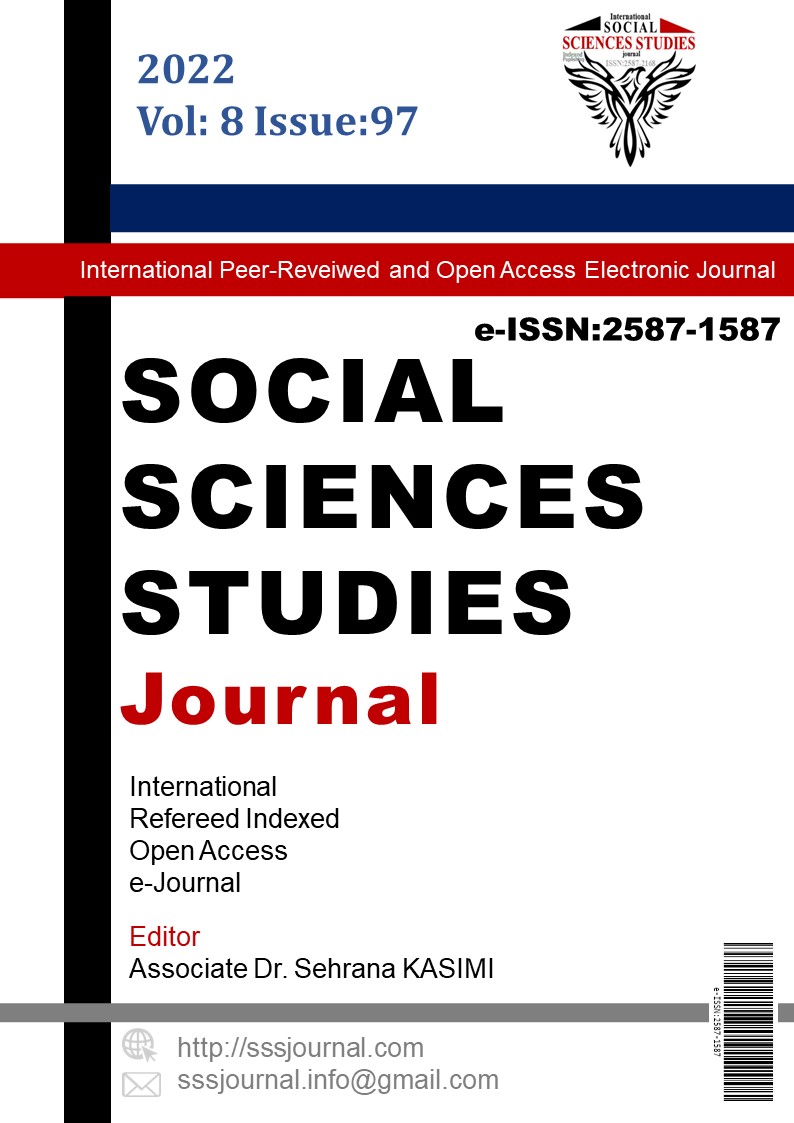Author :
Abstract
Sanatın tarihsel oluşum sürecine bakıldığında tamamen bireysel ve özgür bir edim olarak uygulandığını ve tecrübe edildiğini söylememiz doğru olmayacaktır. Sanat hümanizm ile iç içe geçerek egemen yapılanmanın amaçları doğrultusunda şekil almış ve gelişim göstermiştir. Bu gelişimin devamı olarak günümüz sanatının da sanat kurumlarının oluşturduğu sınırlı dünyanın belirleniminde gerçekleştiğini söylememiz gerekir. Karşı sanat tavrı bu egemen yapının bozulması, sanatın bağımsız icra edilmesi ve sanatın bireylerin yaşamlarını şekillendirmektense zenginleştirmesi amacını güden girişimler olarak anlaşılmaktadır. Gelgelelim sanatta bağımsızlaşma girişimlerinin bir parodiye dönüştüğü çağdaş dönemde karşı olma hali sanat kurumlarına kabulün bir gerekliliği gibi çalışmaktadır. Öyleyse kurumsal yapının işleyişini bozucu girişimler ile yaşamın zenginleştirilmesi ana akıma uyan ve uysallaşmış bir sanat edimi ile değil ama ancak çokluk bağlamında söz konusu olabilir. Karşı hareketlerin kalıplaştırma yoluyla sistem tarafından içselleştirilmesi ve sanatın teknolojik imkanlar ile bireyselleşme ve bağımsızlaşma olanakları makale kapsamında incelenmektedir.
Keywords
Abstract
When we look back to the historical formation of art, it would be wrong to interpret that it is practiced and experienced independently. Art has been shaped and developed in line with the aims of the dominant social structure along with humanism. As a continuation of such development, we should state that, today, art also takes place within the determination of the confined world formed and controlled by art institutions. The antagonist art attitude should be understood as attempts to disrupt this dominant structure, to perform art independently, and to enrich the lives of individuals rather than shaping them. However, in the contemporary era when attempts to become independent in art turn into a parody, the state of opposition works as a requirement for admission to the art world. Therefore, enrichment of life with attempts to disrupt the functioning of the institutional structure can only be in question in the context of multitude, not with an art act that conforms to the mainstream and has become tame. The internalization of opposing movements by the system through stereotyping and the attempts of individualization and independence of art with technological possibilities are examined within the scope of the article.
Keywords
- Baudrillard, Jean. (2012a). Sanat Komplosu. (E. Gen & I. Ergüden, Çev.). İstanbul: İletişim Yayınları.
- Baudrillard, Jean. (2012a). Sanat Komplosu. (E. Gen & I. Ergüden, Çev.). İstanbul: İletişim Yayınları.Baudrillard, Jean. (2016). Simülakrlar ve Simülasyon. (O. Adanır, Çev.). Ankara: Doğu Batı Yayınları. Baudrillard, Jean. (2012b). Kusursuz Cinayet. (N. Sevil, Çev.). İstanbul: Ayrıntı Yayınları.
- Baudrillard, Jean. (2011). İllüzyon, Yitirilen İllüzyon ve Estetik. O. Adanır (Çev.). Kusursuz Cinayet. 11-27. Ankara: Doğu Batı Yayınları.
- Bishop, Claire. (2018). Yapay Cehennemler. (M. Haydaroğlu, Çev.). İstanbul: Koç Üniversitesi Yayınları. Calinescu, Matei. (2010). Modernliğin Beş Yüzü. (S. Gürses, Çev.). İstanbul: Küre Yayınları.
- Carrol, Noel. (2016). Sanat Felsefesi. (G. K. Tirkeş, Çev.). Ankara: Ütopya Yayınevi.
- Greenberg, Clement. (1939). Avangart ve Kitsch. Charles Harrison & Paul Wood (ed.). Sanat ve Kuram 1900- 2000. 577-588. (S. Gürses, Çev.). İstanbul: Küre Yayınları. (2005).
- Artun, Ali. (2004). Kuramda Avangartlar ve Bürger ’in Avangart Kuramı (Bürger, Peter. Avangart Kuramı sunuş yazısı). İstanbul: İletişim Yayınları.
- Moorhouse, Paul. (2005). And The Word Was Made Art, John Latham. Tate. Erişim: 09.02.2022. https://www.tate.org.uk/tate-etc/issue-5-autumn-2005/and-word-was-made-art
- Kirsten Mairead, Gill. (2019). Group Material, Democracy, 1988-89. Dia Art. Erişim: 01.02.2022. https://www.diaart.blog/home/groupmaterialdemocracy
- Wikiart. Erişim: 23.01.2022. https://t.ly/Gw2D
- Wikipedia. Erişim: 19.12.2021. https://en.wikipedia.org/wiki/Comedian_(artwork) Moma. Erişim: 10.01.2022. https://www.moma.org/collection/works/81529
- Wikipedia. Erişim: 11.12.2021. https://en.wikipedia.org/wiki/Gran_Fury
- Dia Art. Erişim: 22.11.2021. https://www.diaart.blog/home/groupmaterialdemocracy Themoscowtimes. Erişim: 17.01.2022. https://t.ly/CRJk
- Abebooks. Erişim: 10.12.2021. https://t.ly/ckzg
- Wikiart. Erişim: 23.11.2021. https://t.ly/Gw2D
- Widewalls. Erişim: 09.01.2022. https://www.widewalls.ch/magazine/dada-poetry





